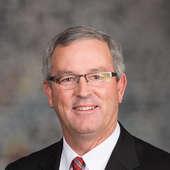- Senator looks forward to private life, still on the job (4/21/22)
- All taxpayers get a break (4/14/22)
- Progress toward meaningful tax relief (4/8/22)
- Working to improve rural workforce housing (3/31/22)
- Busy year for appropriations committee (3/24/22)
- A review of legislative action last week (3/17/22)
- A review of legislative action last week (3/16/22)
Opinion
Unpacking the Legislature's structure
Thursday, December 22, 2016
Since the election, we have been looking at the internal workings of the Legislature, and there are important discussions regarding committee chairmanships and committee assignments taking place.
The Legislature is divided into three caucuses, each consisting of 16 or 17 senators and roughly following the geographic lines of the state's congressional districts, and it is within the caucus that the makeup of committees are determined.
Within the caucus, senators turn in their preference choices for the committees they would like to serve on. The Committee on Committees holds something like a draft process within sports, taking into account seniority and preferences to fill slots.
However, at this point, no one knows how the committees will look until the chairmen are elected on the first day of the session in January.
The Election Technology Committee met last week, and heard testimony on the concerns of ageing tallying machines, logistical hurdles for counties with 300,000 voters versus those with only 300, and other challenges.
The same equipment is used in all counties, but the logistics of tabulation and ensuring the integrity of elections are all the more urgent in light of recent controversy in the national news. Nebraska wants make sure that the sanctity of the vote is maintained here without a doubt.
Nebraska is one of the top states in terms of the number of different ballots which must be printed because we include elections for so many ESUs, school districts, county commissioners, NRDs, and city councilmen, and many times the lines between those districts don't always match, so in the presidential primary this year for instance, over 3000 combinations of ballots needed to be printed.
That represented a substantial expense to all counties. There is new technology coming to market which could allow a voter to complete his or her vote on a computer, which will then print the voter's selections, and the voter would then verify that printed ballot before feeding it into a tally machine.
This is one way to save on the expense of printing ballots, but the offset with this scenario, of course, is the cost of computers, printers, and other technology.
Going to all mail in ballots may be another alternative. This would save the expense of poll workers but would add the cost of postage. In counties and states which are currently doing this it seems to be working relatively well.
The main concern which kept coming up for the Election Technology Committee is that the tallying machines in Nebraska are nearing the end of their life cycles, and will soon need some sort of upgrade. The question is, who pays for that: one possibility is the state in conjunction with federal money, or placing the burden entirely on the counties and their property taxpayers to pay for it.
Finally, this column should be published just before the Christmas weekend. Josie and I would like to wish you and your loved ones a very Merry Christmas and safe travels wherever this holiday season takes you.

